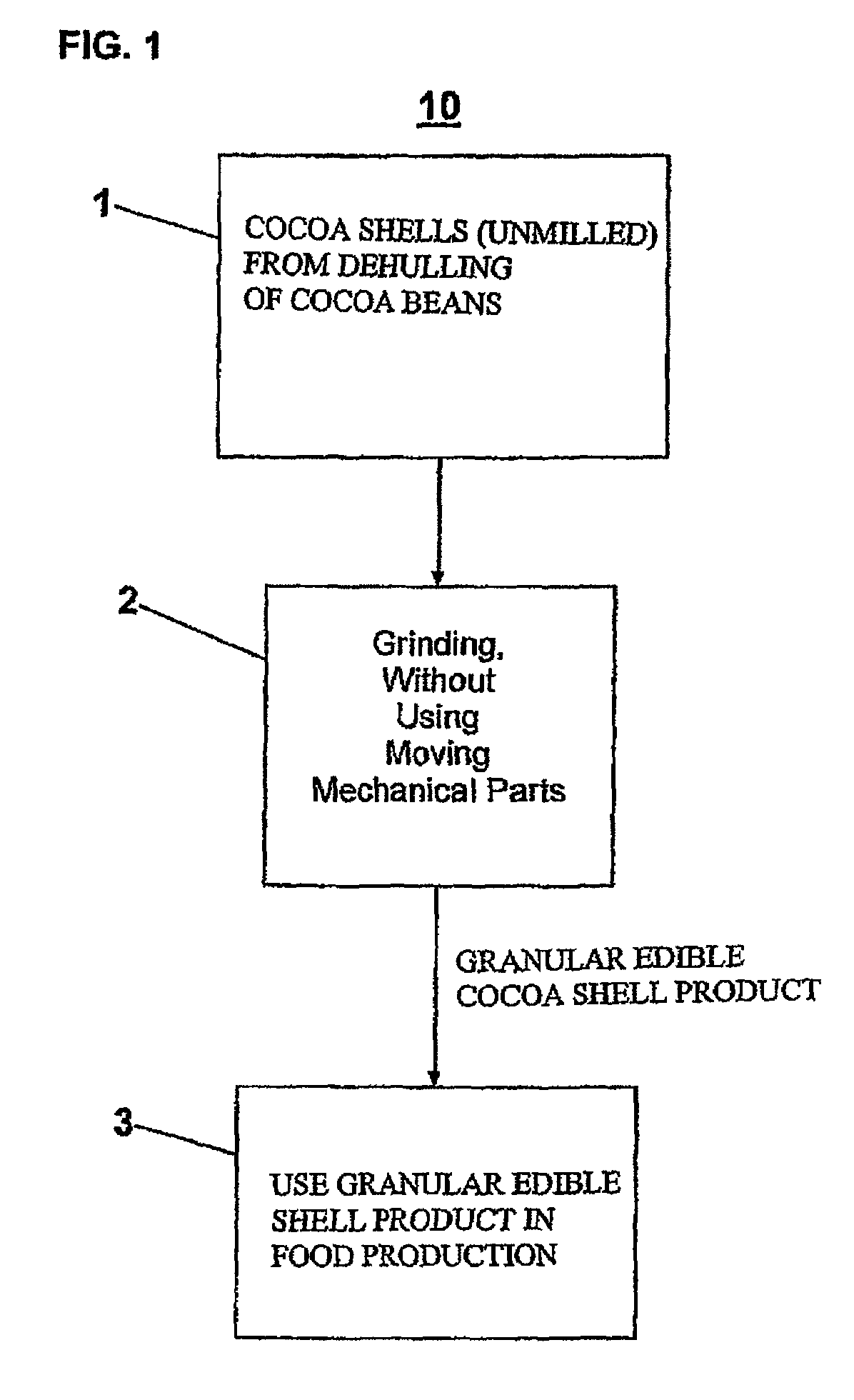Process for milling cocoa shells
a cocoa shell and shell technology, applied in the field of cocoa shell milling, can solve the problems of increasing the wear of equipment parts that contact, difficult milling, and substantial aggregate amounts of cocoa shells in high-volume cocoa bean processing facilities
- Summary
- Abstract
- Description
- Claims
- Application Information
AI Technical Summary
Benefits of technology
Problems solved by technology
Method used
Image
Examples
example 1
[0049]Cocoa shells were processed in a vortex processing apparatus to evaluate the milling effects on the shells. Cocoa shells were obtained from winnowing roasted cocoa beans. The cocoa shells had a moisture content of approximately 6 wt. %.
[0050]The cocoa shells were introduced into a WINDHEXE apparatus for circular vortex air-flow material grinding. The WINDHEXE apparatus was manufactured by Vortex Dehydration Systems, LLC, Hanover, Md., U.S.A. The basic configuration of that type of apparatus is described in U.S. patent application publication no. 2002 / 0027173 A1, and reference is made thereto. The process unit had two inlet ports equidistantly spaced around the upper portion of the apparatus through which a compressed air stream was concurrently introduced in a counter-clockwise direction.
[0051]Testing was performed in a three-foot diameter WINDHEXE apparatus with compressed air introduced at 128EC (262° F.), air introduction rate of 1000 cubic feet per minute (CFM), and a pres...
PUM
 Login to View More
Login to View More Abstract
Description
Claims
Application Information
 Login to View More
Login to View More - R&D
- Intellectual Property
- Life Sciences
- Materials
- Tech Scout
- Unparalleled Data Quality
- Higher Quality Content
- 60% Fewer Hallucinations
Browse by: Latest US Patents, China's latest patents, Technical Efficacy Thesaurus, Application Domain, Technology Topic, Popular Technical Reports.
© 2025 PatSnap. All rights reserved.Legal|Privacy policy|Modern Slavery Act Transparency Statement|Sitemap|About US| Contact US: help@patsnap.com



